

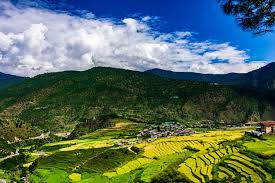
Punakha valley has a pleasant climate with warm winters and hot summers. It is located at an average elevation of 1200 Meter above sea level and it takes 3 hours away from Thimphu (Current capital city of Bhutan), Punakha offers a different climate compared to the other Dzongkhang. Punakha is the country's district main producer of rice because of the suitable climate.
It's known for the Punakha Dzong, a 17th-century fortress at the juncture of the Pho and Mo Chhu rivers. The fortress hosts the Punakha Tshechu, a religious festival featuring masked dances and music. In the surrounding Punakha Valley, temples include the fertility-focused Chimi Lhakhang and the hilltop Khamsum Yulley Namgyal Chorten, which has river and mountain views.
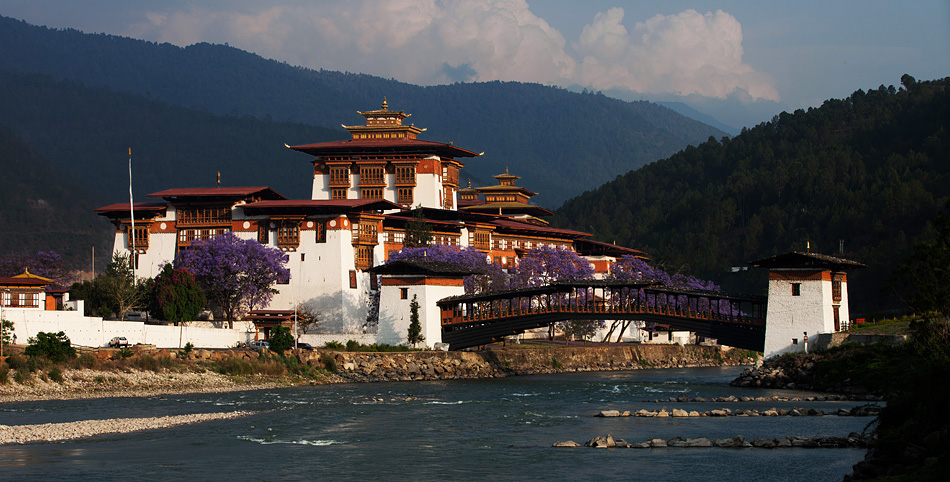
The Punakha Dzong (the palace of great happiness or bliss), is the administrative centre of Punakha District in Punakha, Bhutan. The dzong was constructed by Ngawang Namgyal, in 1637–38. also known as Pungtang Dechen Phodrang Dzong, stands as a majestic symbol of Bhutanese architecture and history. Located at the confluence of the Mo Chhu and Pho Chhu rivers, this fortress-monastery boasts stunning traditional Bhutanese design, with intricate artwork adorning its walls and courtyards.
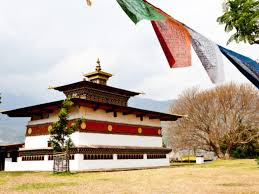
The famous Chimi Lhakhang is dedicated to Lama Drukpa Kunley, the 15th-century Tibetan magician, saint and exponent of ‘crazy wisdom’. Chimi Lhakhang is located in between very beautiful paddy fields near Lobesa, it is one of the most scenically located monasteries in eastern Bhutan and takes about half an hour walk till the monastery from the road. Chimi Lhakhang, affectionately known as the "Fertility Temple," is a quaint and charming Bhutanese temple dedicated to Drukpa Kunley, the Divine Madman.
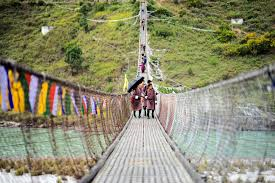
The Punakha Suspension Bridge, one of Bhutan's longest suspension bridges of almost 250m, spans gracefully across the Mo Chhu River, offering stunning views of the surrounding landscape. And which also connects to the nearby villages.
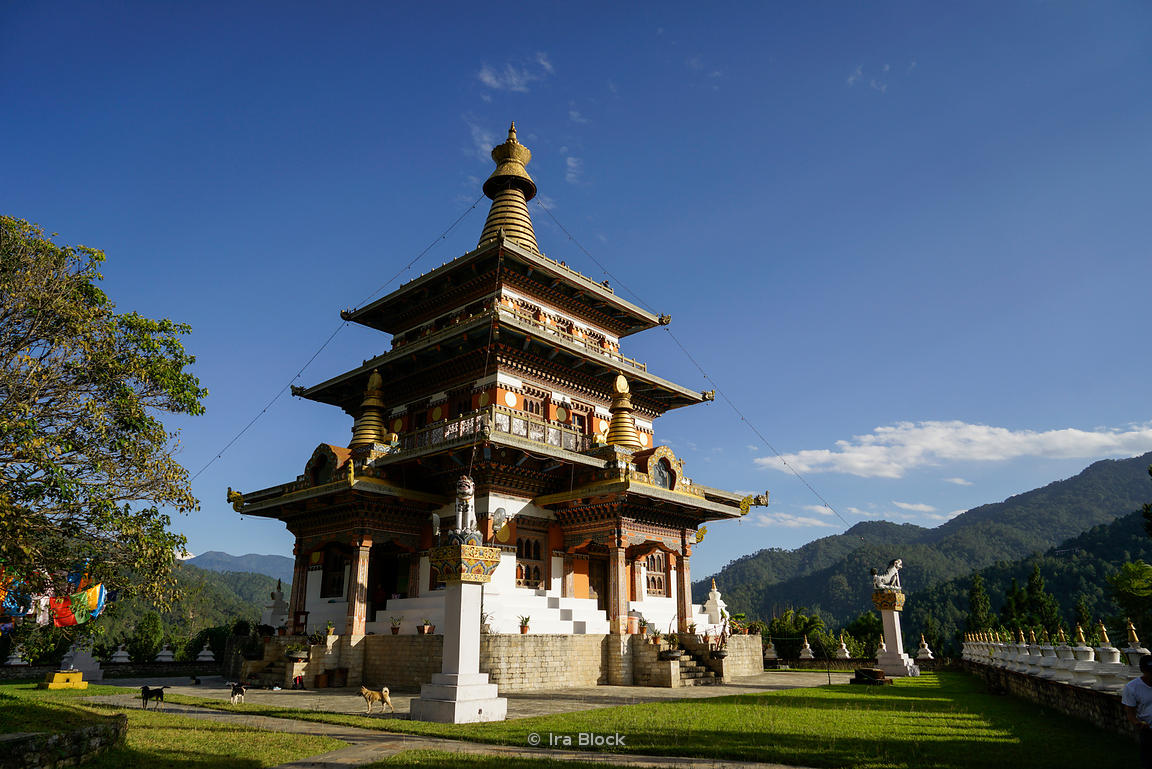
Standing regally on the hill above the Punakha valley, Khamsum Yulley Namgyal Chorten is a classic example of the amazing traditions and architecture of Asian countries. The chorten stands 30-meters (100-feet) tall, nad it has three stories covered with painted pageant of characters from the annals of Vajrayana Buddhism – including one protector deity pictured riding a shaggy brown migoi or yeti. Visitors can embark on a scenic hike through the lush countryside to reach the chorten and marvel at its intricate artwork and serene ambiance.
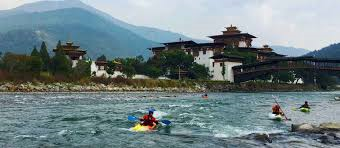
Rafting on the Mo Chhu River offers an exhilarating adventure amidst the stunning landscapes of Punakha, Bhutan. Since there is little road access and the majority of Bhutan's rivers are extremely steep and swift, white water rafting is not recommended. With their easy access and safety, only a few rivers are open for rafting. The most popular river for rafting in Bhutan is the Pho Chu, with a course of about 16 km and approximately 15 class 2–4 rapids. The Mo Chu, with a course of 10 km and approximately 10 rapids with 2–2+ rapids, is the second most popular river.
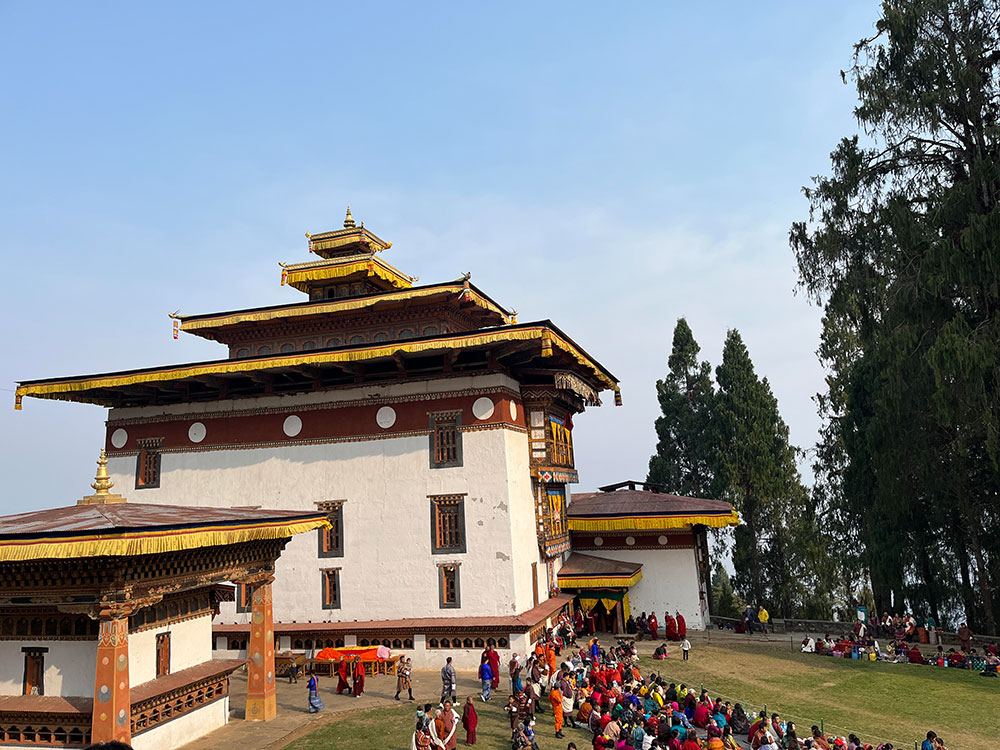
Welcome to Talo Village, where you can experience a Bhutanese village lifestyle. Talo Gewog is responsible for the charming villages strewn along a ridge above the Punakha valley at an elevation of about 2,800 meters. Nonetheless, there are numerous other tiny, picturesque villages like Lapsakha Village, Nobgang Village, and Gangthramo Village within Talo Gewog's territory. However, the collective term for these villages is typically "Talo Village". One of the greatest things to do in Punakha is visit the village, which is also spiritually blessed. There are numerous temples and monasteries; the best ones to name are Nobgang Lhakhang, Talo Monastery, and Nalada Buddhist Institute.